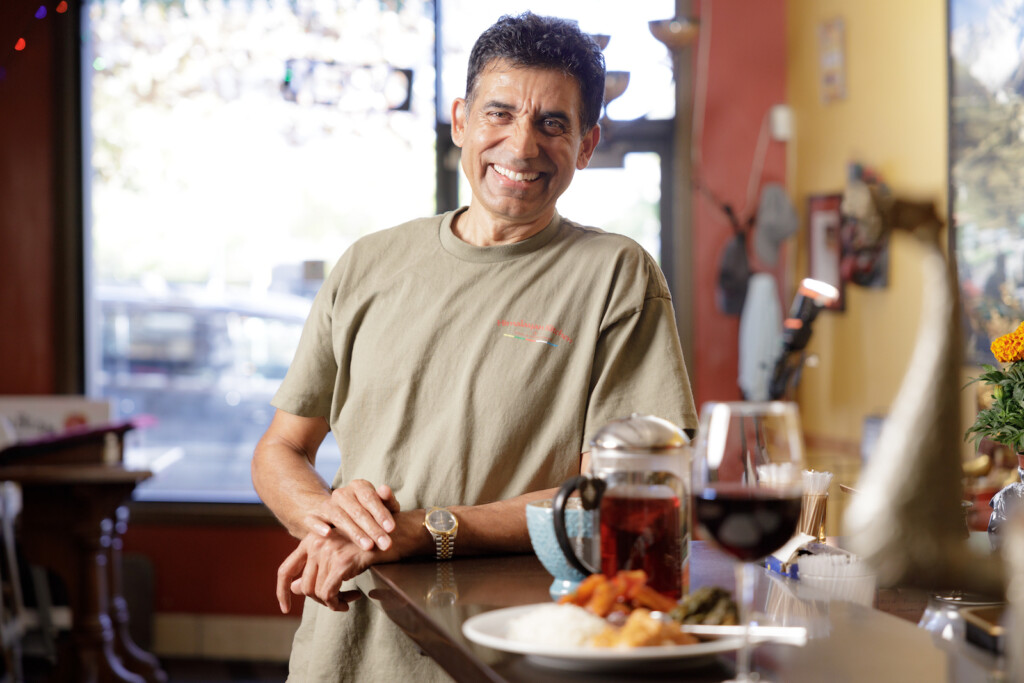I have known Surya Bastakoti, owner of Himalayan Kitchen restaurant, for the better part of two decades. And like just about everyone who has met Surya, I am continually struck by his chttps://www.thefaceofutah.com/himalayan-kitchen-20-years-of-nepalese-indian-and-tibetan-cuisine-in-salt-lake-cityongeniality, generosity, and infectious smile. He’s one of the most positive people I’ve ever met, which might come as somewhat of a surprise given some of the trials and tribulations he’s endured. But more about that later.
Surya’s Culinary Journey
Surya and his wonderful team are celebrating the 20th anniversary of Himalayan Kitchen this year, a restaurant that in some ways got its start in Surya’s home in Gorkha, Nepal.
“When I was 10 or 11, I began learning to cook from my mother, who was a great cook,” Surya says, recalling that they had a garden where he learned the importance of cooking with fresh ingredients. “We grew broccoli, spinach, cauliflower, and things like that.”
In the mornings he would pick veggies for that day and was chastised by his mom the time he “cheated” and picked some spinach the night before it was to be used. “You always pick it fresh the day you eat it,” she admonished Surya.

Hand-Prepared Ingredients
That lesson may explain the fabulously fresh flavors at Himalayan Kitchen, where they go to the trouble to toast, grind and blend all of the spices used in curries and other sauces and stews every week. “Most cooks just use pre-mixed spices from a bag or a jar,” said Surya. But that just won’t do at Himalayan Kitchen, and you can certainly taste the difference.
Each curry at Himalayan Kitchen — whether it’s Nepali-style goat curry, aloo tama bodi with black-eye peas, methi curry, vindaloo, or any of the many others — is made from scratch. Many Indian restaurants tend to use one basic curry to which they add proteins and such. It’s a practice and commitment to excellence that has resulted in two decades of Himalayan Kitchen’s success.
Harrowing Escape
The tale of how Surya wound up in Utah is a harrowing one entailing kidnapping, torture and ransom. He founded a very successful trekking business in Nepal, and following a coup d’etat by King Gyanendra, which imposed brutal martial law, “many people were kidnapped and killed,” says Surya. He was one of the people kidnapped.
To this day, he’s not certain who his thuggish kidnappers were, but they took Surya and kept him in a bunker with dozens of other prisoners for weeks, beating and torturing him until he finally agreed to give them the money he had in the bank from his trekking company. “I was eventually released on the street in Kathmandu with just my cell phone,” says Surya. “I called my sister.” Shortly after that, he fled to New York City where he had a friend to stay with.
Surya had visited Salt Lake City in 2003 in order to learn more about paragliding, a sport he would eventually and nearly single-handedly introduce to Nepal, and was organizing a paragliding expedition to Mount Everest when he was abducted. The mountains surrounding Salt Lake City remind Surya of those of the Kathmandu Valley. He feels at home here, although he does miss certain Nepalese dishes featuring barley and millet, which he has trouble finding.

Surviving and Thriving
Being the owner of a restaurant was particularly difficult during the COVID 19 pandemic, and Surya feared he would have to close Himalayan Kitchen. The restaurant survived, thanks in part to loyal local customers’ support, but it’s still an uphill battle to show a profit.
“Food costs have gone sky high, along with rent, labor costs, paper, utilities, and everything else,” says Surya. But he still refuses to cut corners. The goat meat for his luscious goat curry is grass-fed and all natural, for example. It would be cheaper to buy frozen goat meat, but quality is key at Himalayan Kitchen.
Thriving in the challenging restaurant industry for 20 years is quite an accomplishment, but Surya fears the chains and big money eateries that seem to be opening everywhere. He stresses the importance of supporting independent, mom and pop businesses.
“When a mom and pop restaurant closes, it’s not coming back,” he reminds us. So the next time you’re craving a killer curry, magnificent momo, or terrific tandoori, keep Surya Bastakoti’s Himalayan Kitchen in mind.
Happy anniversary to Surya and his talented team! Here’s a toast to 20 more years of fabulous fare at Himalayan Kitchen.
Feature Image of Surya Bastakoti by John Taylor.






